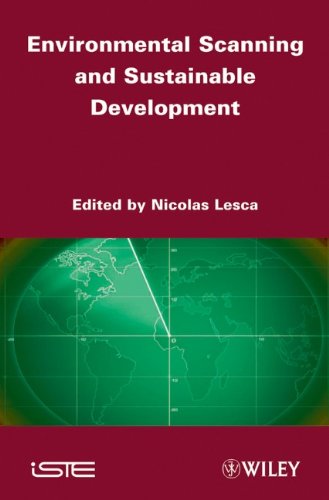

Most ebook files are in PDF format, so you can easily read them using various software such as Foxit Reader or directly on the Google Chrome browser.
Some ebook files are released by publishers in other formats such as .awz, .mobi, .epub, .fb2, etc. You may need to install specific software to read these formats on mobile/PC, such as Calibre.
Please read the tutorial at this link. https://ebooknice.com/page/post?id=faq
We offer FREE conversion to the popular formats you request; however, this may take some time. Therefore, right after payment, please email us, and we will try to provide the service as quickly as possible.
For some exceptional file formats or broken links (if any), please refrain from opening any disputes. Instead, email us first, and we will try to assist within a maximum of 6 hours.
EbookNice Team

Status:
Available0.0
0 reviews
ISBN 10: 1848212844
ISBN 13: 9781848212848
Author: Nicolas Lesca
Chapter 1. Sustainable Development: a Vague and Ambiguous “Theory” 1
Yvon PESQUEUX
1.1. Introduction 1
1.2. Sustainable development as a “vague” theory 6
1.3. Company actions justified by reference to the notion of sustainable development: consequentialism tested by modern deontology 9
1.4. The dimensions of ambiguity of the notion 14
1.5. Conclusion: calling into question managerial references in relation to sustainable development 19
1.6. Bibliography 22
Chapter 2. Parameters and Particularities of Sustainable Development-oriented Strategic Scanning 25
Marie-Laurence CARON-FASAN
2.1. Introduction 25
2.2. Strategic scanning 26
2.3. Applying a sustainable development-oriented strategic scanning process 36
2.4. Conclusion 44
2.5. Bibliography 45
Chapter 3. Sustainable Development of Large Network Service Companies: Inhabiting Territories via Middle Managers, Strategic Scanners 47
Alain Charles MARTINET and Marielle Audrey PAYAUD
3.1. Introduction 47
3.2. The foundation of modeling 48
3.3. The architecture of the model 52
3.4. Middle managers: key players of sustainable development 62
3.5. Conclusion 71
3.6. Bibliography 72
Chapter 4. Small Business and Sustainable Development 77
Michel MARCHESNAY
4.1. Introduction 77
4.2. The favored SD fields 77
4.3. SB: a multiple identity 79
4.4. Strategic scanning in SBs: a specific approach 84
4.5. Types of entrepreneurs, strategic scanning and SD 87
4.6. Conclusion 98
4.7. Bibliography 99
Chapter 5. Human Resources Scanning: a Tool for the Implementation of Sustainable Development? 101
Marie-Christine CHALUS-SAUVANNET
5.1. Introduction 101
5.2. Theoretical approach, explanations and the link between HRS and SD 102
5.3. Research methodology 109
5.4. Results and discussion 111
5.5. Conclusion 124
5.6. Bibliography 125
Chapter 6. Sustainable Scanning in a Network: an Ambitious Project for Company/territory Synergies Creation 129
Magalie MARAIS, Solange HERNANDEZ and Olivier KERAMIDAS
6.1. Introduction 129
6.2. Sustainable scanning within RPISED: a “chameleon” concept locally orchestrated 131
6.3. An empirical study of sustainable scanning in the RPISED: a methodological approach 140
6.4. Empirical contributions to the theory: presentation of the main results 143
6.5. Conclusion 156
6.6. Bibliography 157
Chapter 7. The Greenhouse Gas Inventory: a Scanning Tool in the Fight Against Climate Change 161
Odile BLANCHARD
7.1. Introduction 161
7.2. Methodology for constructing a GHG inventory 163
7.3. The GHG inventory as a strategic scanning tool 173
7.4. Conclusion 180
7.5. Bibliography 182
Chapter 8. Targeting “Sustainable Scanning”: a Methodology Based on Logistics and Supply Chain Management 185
Nathalie FABBE-COSTES, Christine ROUSSAT and Jacques COLIN
8.1. Introduction 185
8.2. Sustainable development: multiple logistical stakes 186
8.3. Relevance of logistics and SCM to anticipate evolutions linked to sustainable development and imagine strategic directions: examples 191
8.4. The logistics intelligence process to target sustainable scanning 196
8.5. Confronting LIP and sustainable development: a first test based on secondary data 203
8.6. Conclusion 207
8.7. Bibliography 208
Chapter 9. Our Actions and Projects, their Risks and Impact on the Environment: using the Weak Signal Concept to Explore Unforeseen and Unexpected Possibilities 213
Nicolas LESCA
9.1. Introduction 213
9.2. The future: a field of possibilities 215
9.3. Detecting weak signals and early (warning) signs in order to explore unexpected possibilities 229
9.4. Conclusion 244
9.5. Bibliography 244
Chapter 10. Sustainable Chemistry and Weak Signals: CO2 as a Raw Material to Value 249
Humbert LESCA
10.1. Introduction 249
10.2. First step: lead the committee to discover the field of sustainable chemistry themselves 253
10.3. Collective construction of puzzles during the session concluding the four-month delay 262
10.4. Example of a puzzle constructed towards the end of the final collective creation of meaning 267
10.5. Conclusion 269
10.6. Bibliography 269
Glossary 271
List of Authors 285
Index 287
environmental sustainability textbook
environmental scanning-
environmental science and sustainability ebook
environmental scanning.pdf
an environmental scan
environmental science and sustainability textbook
Tags: Nicolas Lesca, Environmental, Scanning